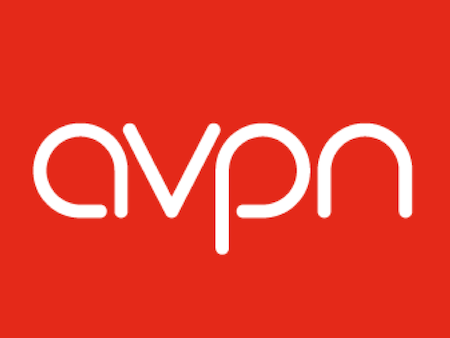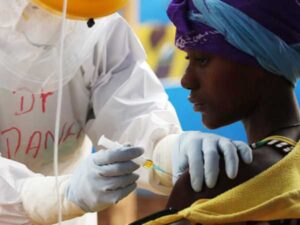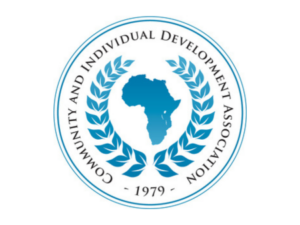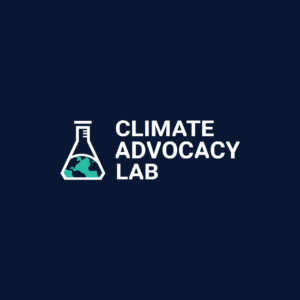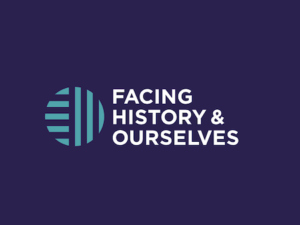AVPN, the largest social investor network in Asia, is an ecosystem builder and convener, bringing together funders to increase the flow of capital towards impact in Asia, and works to ensure that resources are deployed effectively.
Roshini Prakash of AVPN, the largest social investor network in Asia, spoke with Alec Saelens on December 13, 2023. Click here to read the full conversation with insights highlighted.
Alec Saelens: Can you introduce yourself and your organization, and tell me what is the problem that you’re trying to tackle and how you’re responding to that problem?
Roshini Prakash: My name is Roshini, I’m the Chief Knowledge Officer at AVPN, the largest social investor network in Asia. AVPN is a network of funders and resource providers. We’re headquartered in Singapore, but we support a community that’s investing through philanthropy, impact investing, and blended finance, and across Asia-Pacific. We have over 600 members. They’re based around the world, but 80% of them are in Asia-Pacific itself, 20% of them in the US and Europe, and all of them contribute towards social capital here.
The mission of the organization is threefold: the first is to connect peers, to help them learn from each other, and to support them in taking some sort of action towards greater impact. The impact can be anything across the spectrum of social and environmental needs in this region. Our goal is really to support SDG 17, which is partnership for the goals. Why we are important is really because this region is home to more than 60% of the world’s population, and we have very deep and intractable issues, but it’s very difficult for somebody sitting outside the region to know who to best partner with, who to learn from, who to collaborate with, and we provide an environment for them to make this happen.
We’ve been around since 2011, so it’s about 12 years now, and we have grown from strength to strength. In the beginning, we were just a convening entity and we let our members decide what are the topics around which they wanted to convene and when, and we were just very responsive to their needs. Since COVID, or 2020, 2021, we have become a little bit more focused on what we will do. Understanding where our members’ preferences are and where the locus of action and energy is, we have launched certain platforms and programs to support that energy. The platforms are in gender equality, climate action, healthcare resilience, youth, and livelihoods. Healthcare resilience is the newest of those platforms. There’s sort of a general interest and cohesion that we see and that’s what we’re supporting. So we don’t tell them how to deploy their funding, but we bring them together so that they can go deeper into conversations.
Alec Saelens: To illustrate what the work actually entails, can you tell me who ultimately benefits from your work and how do they actually benefit?
Roshini Prakash: Good question. Let me try and frame it through the lens of collaboration. I did say connect, learn and act, but at the heart of it is that we must work together. That we must collaborate and we must align. We must break the silos that kind of separate us and make us think we know the answer and be open to finding ways of working together. Just before COVID, we hosted a session for people who are working in collaborative philanthropy in Asia to come together in Singapore to discuss what they do, how they do it, and how we help them through the process. At that time, the assumption was that collaborative philanthropy was not happening at the scale that was present in the US. In coming together, we found that actually there were a number of nascent opportunities, particularly in places like India and in Singapore, where people were coming together to pool funds or to share information, share resources. A lot of them were donor-driven, but substantially grantee driven as well. So we were able to map out that environment, we were able to socialize the idea, and they established a community. We would have convened once more, except with COVID we couldn’t meet in person anymore, but we had sessions online instead for people to talk about how to collaborate in different sectors.
Now when COVID hit and everybody was grounded, there was also a very natural impulse to say, “Now how do I deploy support to places that are not getting the support in Asia?” Everybody wanted to do something, but people were very cognizant in our network that a lot of funding was going to the same place and there were places that had huge gaps. And because we had already primed them with the idea of collaborative philanthropy and what that would mean and they’ve met people, a number of people came up to us and said, “Hey, how about we do something together, and can AVPN support us in this process?” We had never managed grants before, that was not our role. So we had to study really quickly, we had to kind of figure it out and ask everybody we knew in the network, “okay, how does this work? What would our role be? How do we make sure that we are a careful and safe steward of funding?” We managed to bring together six funders around a primary healthcare and COVID relief philanthropic pooled fund for Southeast Asia. I think the impetus of COVID gave everybody the same sense of urgency, the same alignment in what they wanted to do, and provided the space for this pooled fund to emerge, but AVPN provided the support system and the secretariat. Because we already had a platform of impact organizations through our deal share platform, we already knew who was working on the ground, and so we were able to support the grantee side of the process as well. We were able to act in our best possible way as an intermediary; connecting the funders, pooling their resources, aligning them towards one course and supporting beneficiaries on the other side. With one important caveat, our philanthropic pool funds only give flexible funding to support operational needs. Also, because of COVID, there was a very clear realization that if you tie it to programmatic outputs and outcomes, organizations themselves are not able to pivot when the need’s there. It’s not only for COVID, but on other occasions as well with very strongly tied grants, it doesn’t give organizations and their leadership the flexibility to do what they do best. So we wanted to make this a defining characteristic of our funds.
Since then we’ve done nine of them, we’re now in the ninth round. I think this is a very good case of how they learned together, connected, and then took some action towards one group of beneficiaries. We’ve done them in STEM, in sustainability, in various different areas. Gender equality is our largest one, a 25 million dollar fund over five years. So I think that’s one example of what we do best.
Alec Saelens: So if I understand correctly, you previously were not the main managers of a fund, but you stepped into that role during the pandemic?
Roshini Prakash: That’s right. We basically are the secretariat, so we don’t hold onto the money and we immediately disperse it. The grantees we select are selected through a pretty rigorous process of due diligence and checks. Because we have members of our team in all the markets where we are active and where we support, they are also able to help us verify that these organizations are legitimate and worthy of the funding. For all our funds, the funders sit on the grantee committee, but we also have a pool of experts from that space, whether it’s gender or STEM, who know really what the challenges are and really can help evaluate who would be best placed to receive the resources. So it’s drawing on the best of our ecosystem to support a particular group of beneficiaries. That’s about 10% of our work, but it’s a good example of how everything comes together. We have brought groups of our members together in order to write policy memos and provide feedback to G20.
Another example, our gender team worked with International Development Research Centre (IDRC) and some United Nations Archives and Records Management Section (UN ARMS) on the care economy, and we published a report around the care economy in Asia-Pacific, and some of the recommendations of their report have now been put into policy in Malaysia and taken on board. That’s another way we facilitate and we support the movement to change. Talking about beneficiaries, it’s a very broad swath of beneficiaries. The primary group of people we support are our members and we support them to mobilize more effectively.
Alec Saelens: If I understand correctly, there’s the people who have the money, the funders, the people who are involved in the philanthropic space, but then there are also the grantees who you are able to invite into the process. You know who they are and their beneficiaries as well, as well as the governments who are ultimately on the receiving end of some recommendations that you can make through some reports and research. So tell me more, you mentioned 10% is the pooling of funding and the distribution of that, you mentioned making some recommendations on policy. Is that the extent of what you do as an organization or do you have any other components to your work that you would like to highlight?
Roshini Prakash: The pillar that I manage is the knowledge pillar. Well, maybe I should start by saying that there are many different levels of beneficiary. The first level of beneficiary would be our members themselves. They joined the network for a reason. They joined the network for connections, they joined the network to learn and to do something in partnership with another person. So if we achieve these three objectives and we help them in their journey of impact and being better at doing impact, then I think we have succeeded on one level. Then the secondary level of beneficiary would be the level of beneficiary that’s closer to the ground, so the grantees of the impact organizations that we have a database on. The database of impact organizations that we manage, that we call the Deal Share Platform, is a database of impact organizations that our members have worked with before and that they recommend to other members. You wouldn’t be on that database unless you have worked with a member before. So this helps in the due diligence.
To go back to what I do, I lead the knowledge pillar, and the knowledge pillar has three components broadly: One is the research and insights, because when you come into this space as a newcomer it’s very difficult to understand how to navigate the landscape, and the research helps them do that. Or if you’re a philanthropist looking to go into impact investing or another instrument and you want to know how others have done it, the research helps you with that. The second pillar is the AVPN Academy, which provides training programs of different lengths for our practitioners in the field. It’s surprising, but there are actually no other platforms that offer practitioners a space to learn from each other in this region from a local context across the spectrum of philanthropy, impact investing, and blended finance. You will find impact investing training modules in certain university programs or maybe an introduction to philanthropy in another university, but there’s no other house which does all of it. Doing all of it is important because you can achieve impact in many different ways.
We believe as an organization that there is sort of a continuum of capital that we work with, all the way from purely grants with zero return expectation, to a more blended approach where you have a financial return expectation. If you don’t think about your entire wealth portfolio like this, then actually you are missing the forest for the trees and you are not really achieving long-term sustainable change. In the academy we try and support practitioners in that process of seeing the bigger picture, understanding how they fit in, how do they support their own clients or their own principles in that journey. The third part is the impact measurement part. There’s a lot of people talking about what they do, but really understanding what impact looks like and how to measure it, what metrics we should consider, how do we put it all together, that’s a new journey for them and for some people very difficult. So we make sure now that we have a M&E [monitoring and evaluation] component to all the work that we undertake.
For every project there must be something which relates to a broader theory of change, and then we report on the impact that we have achieved. We have one for the organization as well. Then we support our members in this process for themselves, so we do a lot of training and we connect them with experts in our network so they can learn and they can find resonance with the work that they’re doing. And that’s just my pillar. The work before the funds pillar is a separate one. The platform’s work, the climate, health, gender, and youth, that’s a third pillar, a different way of convening.
I have also spoken about the policy work. And over and above that, we organize one large global conference every year, which brings together about 1,500 people in this impact space, so it’s the largest of its kind. We have regional summits across the region. We are just finishing the South Asia summit right now in Mumbai, last month was the one in Northeast Asia, and we will have one in Southeast Asia as well. So that’s the broader piece of what we do.
Alec Saelens: What are the main metrics that you look at when you think about impact measurement when it comes to impact investing?
Roshini Prakash: For us, the goal is to mobilize more capital towards impact and to ensure that the effectiveness of that capital has improved. That’s the long-term goal of this organization. Then the outcomes that we chase or we look for: the greater collaboration within the community, is there more alignment in what people are looking to achieve? Are they taking action in a concerted way? Are they putting resources actively, on the long term, towards achieving their goals? I remember there’s one more that I’m missing, but I’ll come to it. Those come from our theory of change, which is with the activities that we do that come under the connect, learn, act, pillars, supporting a pillar on leadership and leading.
It is an important long-term question for us, to be honest. It’s just not something that you can report on in three years or five years. We’re in this for a very long haul and we have to find different ways of capturing the data. One thing is what we can measure within our network, how many connections have we made? What has happened with those connections? Have people gone on to work together? Who have they supported through that? One thing that we do every year is the Constellations Award, where we invite people to share their stories of collaboration with us and the impact that they have achieved through that collaboration. We’ve run the Constellations Awards, I think, for four years already, and the range and diversity of the projects that come up are testament to the diversity of this ecosystem. So that’s one way.
The other way is some media monitoring, which we used to do in a pretty rudimentary way by tracking Google alerts on where we had mentions of our members. We’re trying to systematize that using AI tools to kind of understand what they’re doing that’s picked up in broad media reports that the public is interested in as well. Then for everything that we do, to try and get feedback from them on the effectiveness of the work and how it has supported them, and will they do this again? If so, how will they do it and what would they change? So it’s a number of conversations. It’s not just quantitative information. I think that because of the way we are set up, we are a hundred people but mostly all in the field, all where our members sit, so we have very close relationships with our members and we have frequent conversations with them. We kind of are their guides in this journey or chauffeurs in this ecosystem, so that allows us to understand whether things are working or not.
Alec Saelens: I think I’ve gotten a sense of this, because you’ve described how unique your organization is, but can you say a little bit more about what is really distinctive about the approach of your work? What perhaps stands out that you think is illustrative of something really original and unique and innovative that you’ve brought to this field?
Roshini Prakash: I think that it is going to sound silly to say it, but I think it is giving people a safe space to connect with their peers and to have the conversations that they need to have. There are a number of global forums and global conferences that can seem intimidating for people who are from Asia, who are not used to speaking in Western context, but this is one of a kind in Asia. When we started, we were very small. We started with a hundred plus people in a university hall auditorium, and now we are 1,500 people. I think that says something to the value that we bring that they keep coming back to learn in this forum, in this context, and to learn from their peers. I mean, there are always going to be things that we don’t know and we’ve never tried before, and that’s when the global forum is important. But there is so much that is going on in Asia that we don’t know about on a daily basis, and our convenings allow them to exchange knowledge on a very granular level so that they don’t duplicate efforts and they have a peer community. I think that it’s a very simple intervention, but it’s a very valuable one for those in our community.
Alec Saelens: With that in mind, looking at broader systems level change, what do you think is most needed from other actors and partners?
Roshini Prakash: I think COVID gave us a sense of that. When we all have a collective sense of urgency, things move a lot faster. One challenge is that everybody prioritizes slightly differently what they want to do first and how they want to do it, and that there’s a false sense of time. The time horizon seems very long, but really we don’t have enough time for all the change that we seek to achieve. With COVID, we did not have time to act, so we had to do it quickly. We needed to take action collectively fast, and we needed to make sure that by protecting one person, we’re protecting everybody. So that alignment has somewhat dissipated since we’ve got over the COVID hump, and I think that we need to bring that back in order to move faster. So we do have annual convenings, like always have a COP, we’re in COP28 and we have conversations like Davos and these are important conversations, but we don’t have that sense of collective urgency. I think that’s probably what we need in order to move faster.
Alec Saelens: How do you try to foster that? Since the pandemic, obviously there was a big moment of learning, how do you try and instill that awareness?
Roshini Prakash: I think that’s where our platforms have become very important because you need a critical mass of people and interests and resources working on the same thing to create that sort of step change to open the door into a new path forward. This is why we need to have the platforms. And it’s very interesting because if I just speak to our climate platform, where we work with philanthropists there, are in places where climate is not top of mind because they haven’t realized that what they do is intersectional to climate. We run the Climate Pathfinders program to help them see the interconnectedness of their work, and that’s where you can see the delta. Once we open their eyes to that interconnectedness, that’s where you’re going to have change, and we bring them together in cohorts. We did one in India, now we’re doing one with Chinese givers, and we will build that resonance across the region that way.
Our gender platform is through the care economy. Where are the gaps where you need a critical mass of people to go in to address? We can’t go where everybody else has gone because they’re already there and there’s a lot happening. Let’s go where there are gaps and let’s help people address that. That’s what our platforms are doing, and I think that’s where we’re going to see the traction.
Alec Saelens: What are the insights and teachable lessons that can be taken from the work, aside from everything that you’ve already shared and expanded upon?
Roshini Prakash: The first thing is that compensations matter. Don’t think you are doing this alone. Speak to somebody and you’ll find out a lot more about what’s going on. This is a space where practices evolve much faster than theory. If you are going to rely just on published reports or academia, you’re not going to move as fast as if you go to the field and speak to the practitioners, people on the ground. Find out what’s working, listen to them. Don’t come in with preconceived notions, but try and find out really for that community how things have worked, what are the challenges, and try and address those challenges. With conversations come relationships, with relationships come trust, and when you have trust, that’s when you’re going to make the real change. This is not a transaction that we are making here. This is the support that we want to uplift people and communities for the long term.
This is a space, unfortunately, where there are a lot of non practitioners who tell practitioners what to do and how to do it, and I think that has to change. I think, actually, it’s not so dissimilar from other conversations that the Solutions Lab has had before. I was looking at your website before and I think trust has come up a little bit, so I just want to double click on that as they say, and re-emphasize how important it is to have trust in the people that you support. They’re not vendors to you. They are actively trying to redress a situation, so listen to them and learn with them.
Experimentation is another thing. I mean, AVPN is known for failing a lot, but failing forward. I’ve said a lot of things about a lot of the work that we’ve done, but it’s all through a process of experimentation that we have got to this space. We have never said no to a project, just tried to learn from it. Maybe it won’t work, but that’s okay, we’ll try it first.
Alec Saelens: What are the main challenges that you see in being able to carry out the work and expand the work and make it happen?
Roshini Prakash: Funding is a huge issue. It is very difficult to sustain the work that we do without long-term flexible support. The way that we have evolved is to try and make the funding that we give through our pooled funds, we have now tried to make that multi year support flexible because we ourselves are nonprofit and we understand the challenges of not doing that. But we haven’t solved it for ourselves. This, I think, is a huge issue because for as long as we are constantly looking for funding and we are worried about that, we are taking away energy from actually doing the work that we are here to do. I think that often when foundations consider who to give to and why to give to them, they will look at the end beneficiary and they will look at the end beneficiary in the sort of lens of impoverishment, what are they lacking and how do we resolve that? They don’t look at the end beneficiary from a capacity building or ecosystem lens, which is where we sit as an intermediary. So it’s even more difficult for us to get the resources to do our work, but the work that we do actually supports the funders in being more effective and simplifying their lives. This is an ongoing conundrum. In order to support the end beneficiary, you need to support the ecosystem as well, and I think that there are a lot of challenges for foundations and other funders to do that.
Alec Saelens: Knowing that you are such a vector and a connector and a platform that fosters learning for people in the philanthropic space, presumably you have conversations or you set the agenda around this understanding that capacity building is crucial, do you see the needle moving on that?
Roshini Prakash: Yeah, it is moving. It’s moving slowly. Now what we have to understand is that I sit in an organization, I have a boss and my boss has a board. That’s the same for a corporate social responsibility (CSR) manager or the head of a foundation. So having a conversation with that CSR manager and getting her to understand, it’s just one step of the process. We both have to work through our organizations to get the rest of the team on board. It’s a process. We need to have alignment on, and understanding of, what it really takes. And that requires, actually, people like you. It’s what people read in the media that supports their understanding, helps them see what’s necessary, and how do we do that best is a question that I’ve always struggled with. Because you don’t always want to be showing the one story of change, you want sometimes to be showing a broader swath of change that has been supported by longer term support, larger thinking, and a more aligned engagement across funders. But this is not often the story. Often the story is one foundation has given to one impoverished community and that impoverished community has been uplifted through that one foundation. That’s something we need to evolve in.
I think that’s what AVPN’s trying to do in its various activities, it just takes time. What we have learned though, is that sometimes it’s not just about us talking to our counterpart, it’s about having their counterparts talk to them about how it’s worked and facilitating that sort of peer-to-peer safe space of conversation, allows that conversation to progress a bit more quickly.
Alec Saelens: Thank you, this is so important, so valuable, and I appreciate your perspective.
Click here to read the full conversation with insights highlighted.
Alec Saelens is a former journalist who supports SJN and its partners track solutions journalism’s impact on society and the industry. In his former role, he researched and consulted on the connection between solutions journalism and revenue. He is co-founder of The Bristol Cable, the UK’s pioneering local media cooperative. Before SJN, he was a researcher and coach for the Membership Puzzle Project and an analyst for NewsGuard.
* This interview has been edited and condensed.
Learn about other organizations working on social innovation in Asia.

